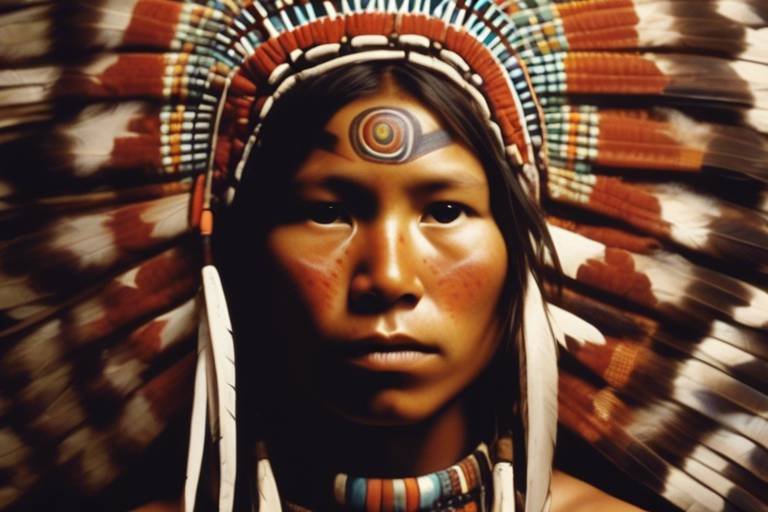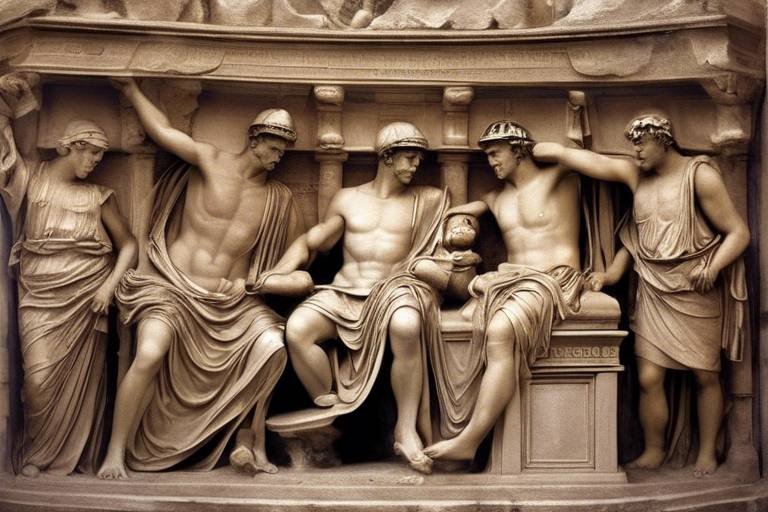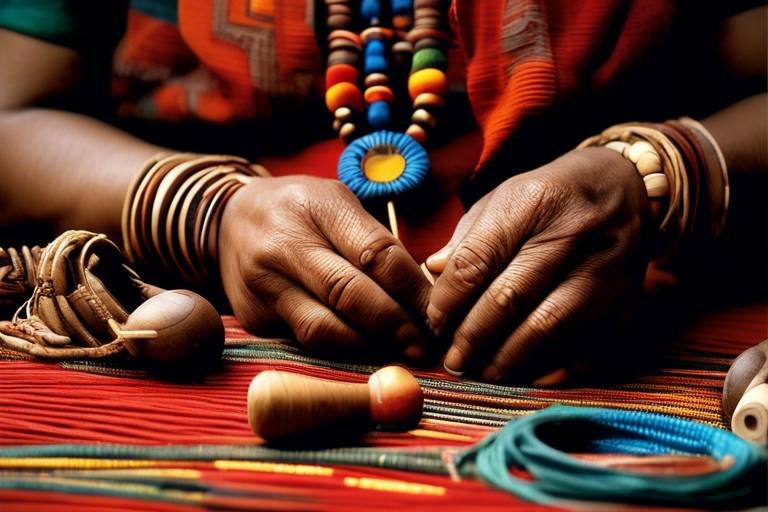The Artistic Heritage of the Aztec Civilization
The Aztec civilization, known for its rich artistic heritage, has left a lasting impact on the world with its diverse and intricate art forms. From sculptures and murals to ceramics and featherwork, the Aztecs showcased their creativity and craftsmanship in various mediums. These artistic expressions not only served as decorative pieces but also held deep cultural and religious significance, offering valuable insights into the beliefs and practices of this ancient civilization.
One of the most prominent art forms of the Aztecs was their sculptures and statues, often crafted from stone and depicting deities, rulers, and mythical beings. These artworks not only displayed the Aztec's mastery of sculpting but also provided a glimpse into their spiritual beliefs and societal structure. Each sculpture told a story, capturing the essence of the Aztec worldview and honoring their gods and leaders.
Aztec mural paintings, adorning the walls of temples and palaces, served as vibrant visual narratives of historical events, religious rituals, and mythological tales. These colorful and detailed artworks were more than just decorations; they were windows into the Aztec culture, conveying their values, traditions, and worldview through intricate designs and symbolic imagery.
Ceramic art was another significant aspect of Aztec artistic expression, with a wide range of vessels, figurines, and ritual items adorned with elaborate designs and symbols. These ceramics were not just utilitarian objects but held spiritual and cultural significance, used in everyday life, religious ceremonies, and burials. Each piece reflected the Aztec's attention to detail and their reverence for artistic craftsmanship.
Featherwork, a highly esteemed art form among the Aztecs, involved creating intricate textiles, headdresses, and ornaments using vibrant bird feathers. These exquisite pieces were worn by nobles and warriors during important ceremonies, symbolizing prestige and power. The intricate patterns and designs of featherwork showcased the Aztec's skill in working with natural materials and their appreciation for beauty and adornment.
Aztec architecture, characterized by grand pyramids, temples, and palaces, was a testament to their engineering prowess and artistic vision. These monumental structures, adorned with intricate carvings and sculptures, served as religious centers and symbols of power. The architecture of the Aztecs not only showcased their technical expertise but also reflected their spiritual beliefs and social hierarchy.
Textile arts played a crucial role in Aztec society, with weaving, embroidery, and dyeing techniques used to create clothing, tapestries, and ceremonial textiles. These intricate fabrics were adorned with symbolic motifs and patterns that conveyed social status, religious beliefs, and cultural identity. Textile arts were not just about clothing but were a form of artistic expression that connected the Aztec people to their heritage and traditions.
Goldsmithing and jewelry were highly valued skills among the Aztecs, who crafted exquisite ornaments using precious metals and gemstones. These ornate pieces were worn as symbols of wealth, status, and religious devotion, showcasing the Aztec's expertise in metallurgy and artistic design. Each piece of jewelry told a story, reflecting the wearer's social standing and spiritual beliefs.
Music and dance were integral parts of Aztec culture, with rhythmic drumming, intricate choreography, and symbolic gestures used in religious ceremonies and celebrations. Music and dance were not just forms of entertainment but were ways to honor the gods, commemorate important events, and unite the community in cultural expression. The lively rhythms and movements of Aztec performances brought people together and celebrated the richness of their heritage.
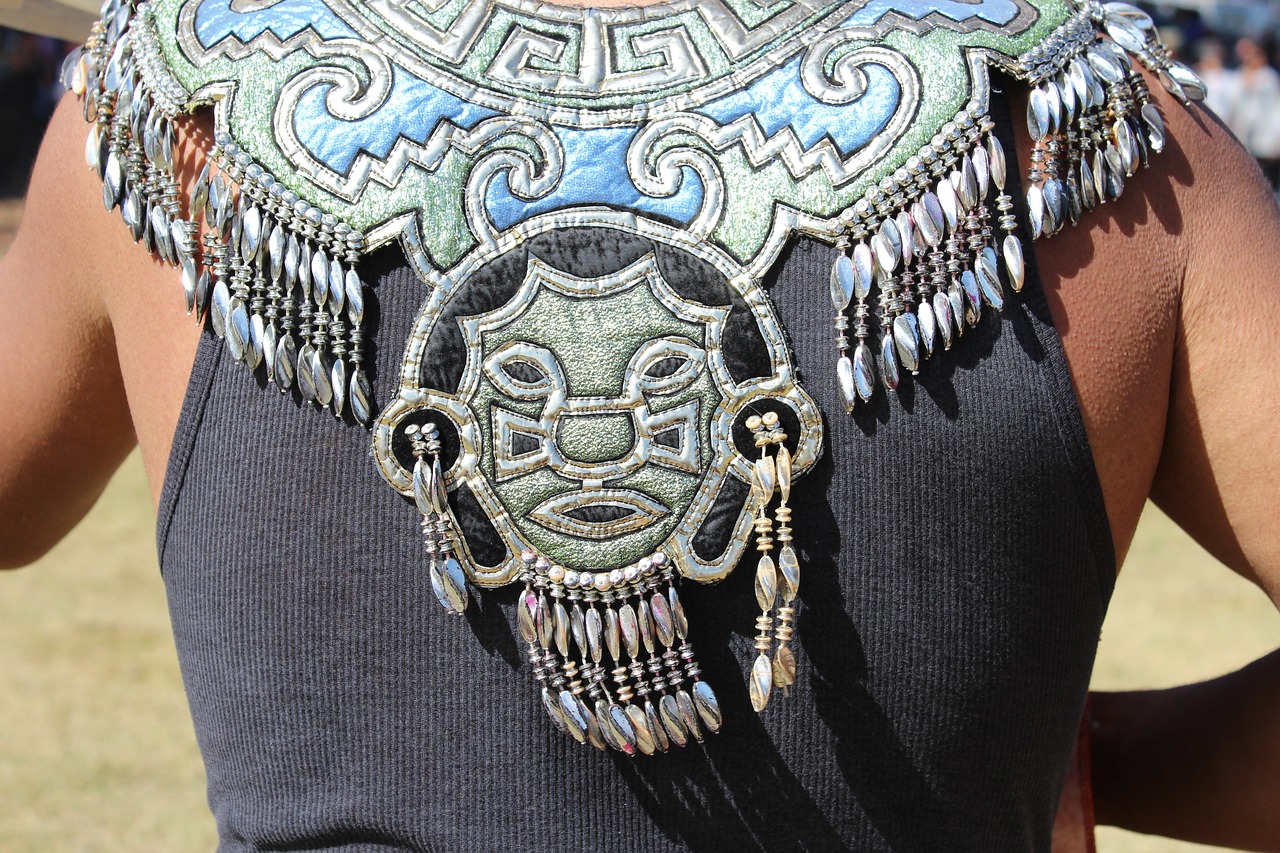
Sculptures and Statues
The Aztec civilization left behind a rich artistic legacy that included intricate sculptures, vibrant murals, and detailed pottery. This article explores the various art forms of the Aztecs and their significance in understanding the culture and history of this ancient civilization.
Aztec sculptures and statues were often made of stone and depicted gods, rulers, and mythical creatures. These artworks showcased the Aztec's skilled craftsmanship and religious beliefs, providing insights into their spiritual practices and societal structure.
The Aztec artisans were known for their meticulous attention to detail, carving intricate designs that represented their deities and legends. These sculptures served not only as artistic expressions but also as religious symbols, embodying the spiritual essence of the Aztec civilization.
One of the most famous Aztec sculptures is the iconic "Coatlicue," a massive stone statue representing the earth goddess. The intricate carvings on the statue's surface depict serpents, skulls, and hands, symbolizing the cycle of life, death, and rebirth in Aztec cosmology.
Moreover, Aztec statues of rulers and warriors were crafted to commemorate their achievements and glorify their roles in society. These imposing figures were often adorned with elaborate headdresses, jewelry, and ceremonial attire, reflecting the Aztec's reverence for their leaders and heroes.
Through these sculptures and statues, the Aztecs immortalized their history, beliefs, and cultural identity, creating enduring artistic masterpieces that continue to captivate and inspire viewers around the world.

Mural Paintings
Aztec mural paintings were not just mere decorations on walls; they were vibrant and detailed artworks that served as visual storytelling tools for the Aztec civilization. These murals adorned the walls of temples, palaces, and important buildings, depicting a wide range of subjects from historical events to religious ceremonies and mythological stories. Each mural was carefully crafted to convey the cultural values and traditions of the Aztec people, providing a glimpse into their rich history and beliefs.
The intricate designs and vivid colors used in Aztec mural paintings were not just for aesthetic purposes; they held deep symbolic meanings that reflected the spiritual and societal aspects of the Aztec civilization. Through these artworks, one can unravel the complex layers of Aztec life, from their reverence for gods and ancestors to their rituals and traditions that shaped their daily lives.
One of the most fascinating aspects of Aztec mural paintings is how they served as educational tools, preserving the collective memory of the civilization through visual narratives. By studying these murals, historians and archaeologists have been able to piece together the story of the Aztec people, their achievements, struggles, and triumphs, creating a bridge between the past and the present.
Imagine standing in front of a towering temple wall adorned with intricate mural paintings, each stroke of the brush carrying centuries-old stories and wisdom. The Aztec mural paintings are not just artworks; they are windows into a world long gone, inviting us to explore and appreciate the artistic heritage of this ancient civilization.
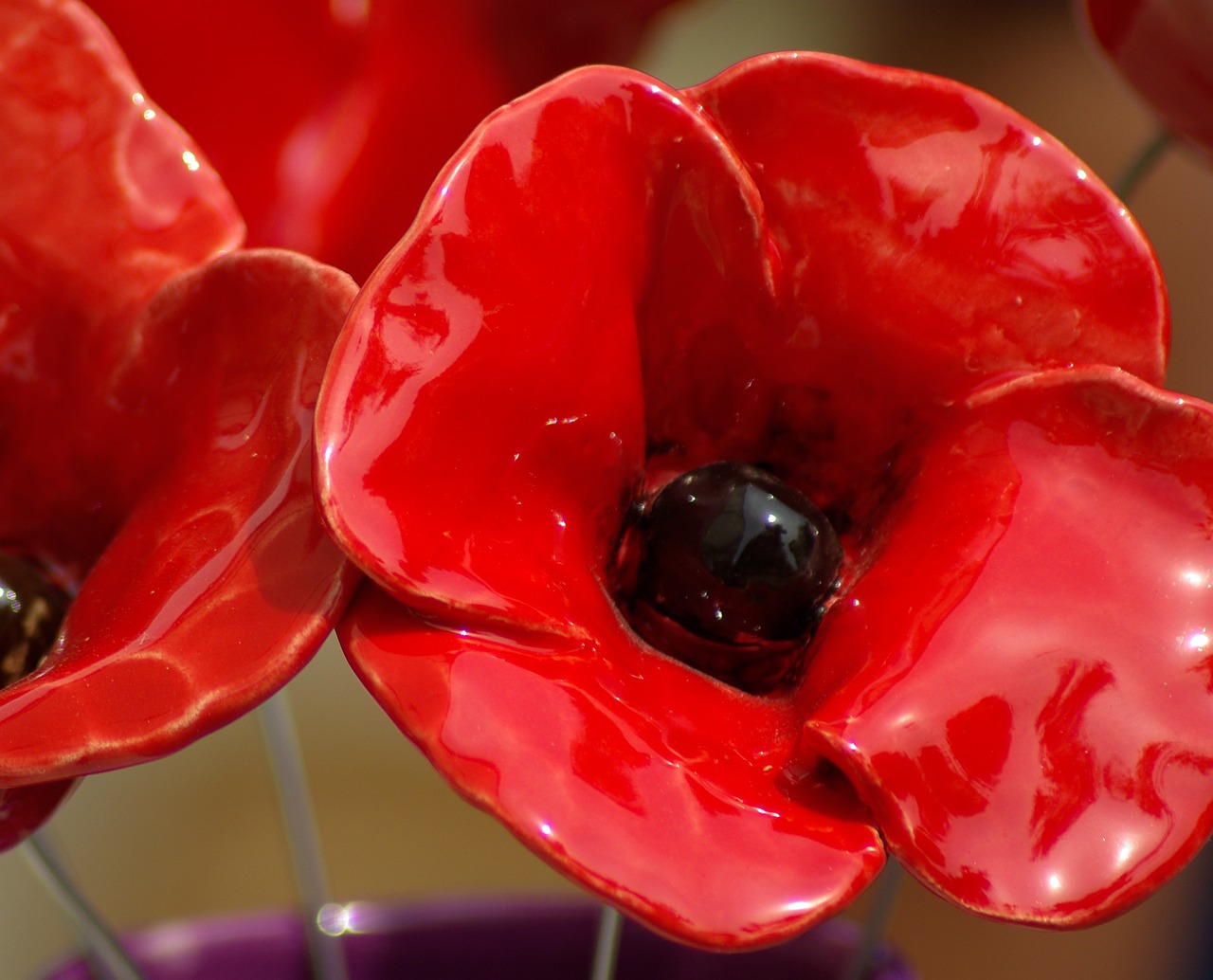
Ceramic Art
When delving into the artistic heritage of the Aztec civilization, one cannot overlook the profound significance of their ceramic art. Aztec ceramic art was a multifaceted form of expression that encompassed a wide array of objects, ranging from everyday vessels to ritual items of great importance.
The craftsmanship and attention to detail displayed in Aztec ceramics were truly remarkable. Each piece was adorned with intricate designs and symbols that held deep cultural and religious significance. These ceramics served not only practical purposes in daily life but also played a crucial role in religious ceremonies and burial practices.
One of the most fascinating aspects of Aztec ceramic art was its ability to capture the essence of Aztec beliefs and practices. The intricate motifs and symbols depicted on these ceramics offered insights into the spiritual world of the Aztecs, shedding light on their cosmology and worldview.
Moreover, Aztec ceramics were not merely utilitarian objects but were revered for their artistic value. The skill and creativity of Aztec potters were evident in the diverse shapes, sizes, and decorations of their ceramic pieces, showcasing the breadth of their artistic abilities.
Through the study of Aztec ceramic art, we gain a deeper understanding of the cultural richness and artistic sophistication of this ancient civilization. Each ceramic artifact serves as a window into the past, allowing us to appreciate the creativity and ingenuity of the Aztec people.

Featherwork
Featherwork was a highly esteemed art form among the Aztecs, symbolizing prestige and power through the creation of elaborate textiles, headdresses, and ornaments using vibrant bird feathers. These exquisite pieces were meticulously crafted by skilled artisans and were reserved for nobles and warriors to wear during important ceremonies and rituals. The intricate designs and vibrant colors of the featherwork reflected the Aztec's reverence for nature and their connection to the spiritual world.
The process of creating featherwork involved meticulous attention to detail, with artisans carefully selecting and arranging feathers to form intricate patterns and designs. Different types of feathers were used to create a variety of textures and colors, resulting in stunning pieces that were both visually striking and culturally significant. The craftsmanship and artistry of Aztec featherwork were unparalleled, showcasing the creativity and skill of the artisans who dedicated themselves to this revered art form.
Featherwork not only served as a form of personal adornment but also held symbolic meaning within Aztec society. The headdresses and textiles adorned with feathers were worn as symbols of status and power, distinguishing the wearer as a member of the elite class. Additionally, featherwork played a role in religious ceremonies and rituals, with certain pieces believed to possess spiritual significance and protective qualities.
Featherwork was a labor-intensive art form that required patience, precision, and a deep understanding of the natural world. Artisans would spend hours meticulously arranging feathers to create intricate patterns, often drawing inspiration from the flora and fauna of the Aztec landscape. The resulting pieces were not only visually stunning but also carried with them the cultural heritage and spiritual beliefs of the Aztec civilization.

Architecture and Temples
The Aztec civilization was renowned for its impressive architectural achievements, with grand pyramids, temples, and palaces that showcased their advanced engineering skills and artistic prowess. These monumental structures were not merely buildings but symbols of the Aztec's power, religious beliefs, and cultural identity.
The Aztec temples, in particular, were sacred spaces dedicated to various deities and religious practices. They were often constructed on top of pyramids, emphasizing their importance and serving as a link between the earthly realm and the divine. The intricate carvings and sculptures adorning these temples conveyed stories of creation, mythology, and historical events, enriching the spiritual experience of those who visited them.
One of the most famous Aztec temples is the Templo Mayor in the heart of their capital city, Tenochtitlan. This imposing structure was dedicated to the gods Huitzilopochtli and Tlaloc and served as the focal point of religious ceremonies, sacrifices, and rituals. Its dual staircase symbolized the duality of the Aztec cosmos, with one side representing light and the other darkness.
The architecture of Aztec temples reflected their cosmological beliefs and the interconnectedness of the natural and supernatural worlds. The layout of these sacred sites was carefully planned to align with celestial events, such as the movement of the sun and stars, emphasizing the Aztec's reverence for the universe and their place within it.
Moreover, the temples were not only places of worship but also centers of political and social activity. They housed administrative offices, libraries, and schools, where priests, nobles, and scholars gathered to discuss matters of governance, history, and religion. The temples thus served as hubs of knowledge and power, shaping the cultural and intellectual life of the Aztec society.
In conclusion, the architecture of the Aztec temples stands as a testament to the ingenuity and creativity of this ancient civilization. Through their monumental structures, intricate carvings, and spiritual symbolism, the Aztecs left behind a lasting legacy that continues to awe and inspire us today.

Textile Arts
The Aztec civilization was known for its intricate textile arts, which encompassed a wide range of techniques and creations that held significant cultural and symbolic value. Aztec textile artists utilized weaving, embroidery, and dyeing methods to produce a variety of textiles, including clothing, tapestries, and ceremonial garments. These textiles were not merely practical items but served as important markers of social status, religious beliefs, and cultural identity within Aztec society.
One of the key aspects of Aztec textile arts was the use of symbolic motifs and patterns that conveyed deeper meanings and stories. Each design and color choice carried specific significance, reflecting the wearer's role in society or their connection to spiritual beliefs. The intricate detailing and craftsmanship of Aztec textiles demonstrated the skill and artistry of the weavers and embroiderers, showcasing their ability to create visually stunning and culturally rich pieces.
Furthermore, textiles played a crucial role in Aztec ceremonies and rituals, where specific garments and textiles were worn to symbolize different aspects of the event or the individuals involved. The use of textiles in religious ceremonies highlighted the spiritual importance placed on these creations, emphasizing their sacred nature and connection to the divine.
Additionally, Aztec textiles were often adorned with feathers, beads, and other decorative elements to enhance their beauty and significance. These embellishments added texture and dimension to the textiles, creating visually striking pieces that were not only functional but also works of art in their own right. The combination of different materials and techniques in Aztec textile arts showcased the diverse skills and creativity of the artisans, resulting in unique and culturally significant creations.

Goldsmithing and Jewelry
Aztec goldsmiths were revered for their exceptional craftsmanship in creating intricate jewelry and ornaments using precious metals and gemstones. The art of goldsmithing among the Aztecs was not merely about adornment but also held deep symbolic and cultural significance.
The jewelry crafted by Aztec goldsmiths was more than just decorative pieces; they were symbols of wealth, status, and religious devotion. Nobles, priests, and warriors adorned themselves with these ornate creations to showcase their social standing and connection to the divine.
Gold, silver, and gemstones were meticulously worked into elaborate designs that reflected the Aztec's mastery of metallurgy and artistic design. Each piece was a testament to the skill and creativity of the goldsmiths, who imbued their creations with spiritual meaning and cultural significance.
These exquisite ornaments were not just accessories but were worn during important ceremonies and rituals, serving as powerful symbols of prestige and power. The intricate craftsmanship and attention to detail in Aztec jewelry highlighted the importance of aesthetics and symbolism in their culture.
From elaborate necklaces to intricately designed bracelets, Aztec jewelry was a reflection of the society's values and beliefs. The intricate patterns and motifs used in these pieces often carried deep spiritual meanings, connecting the wearer to their heritage and traditions.
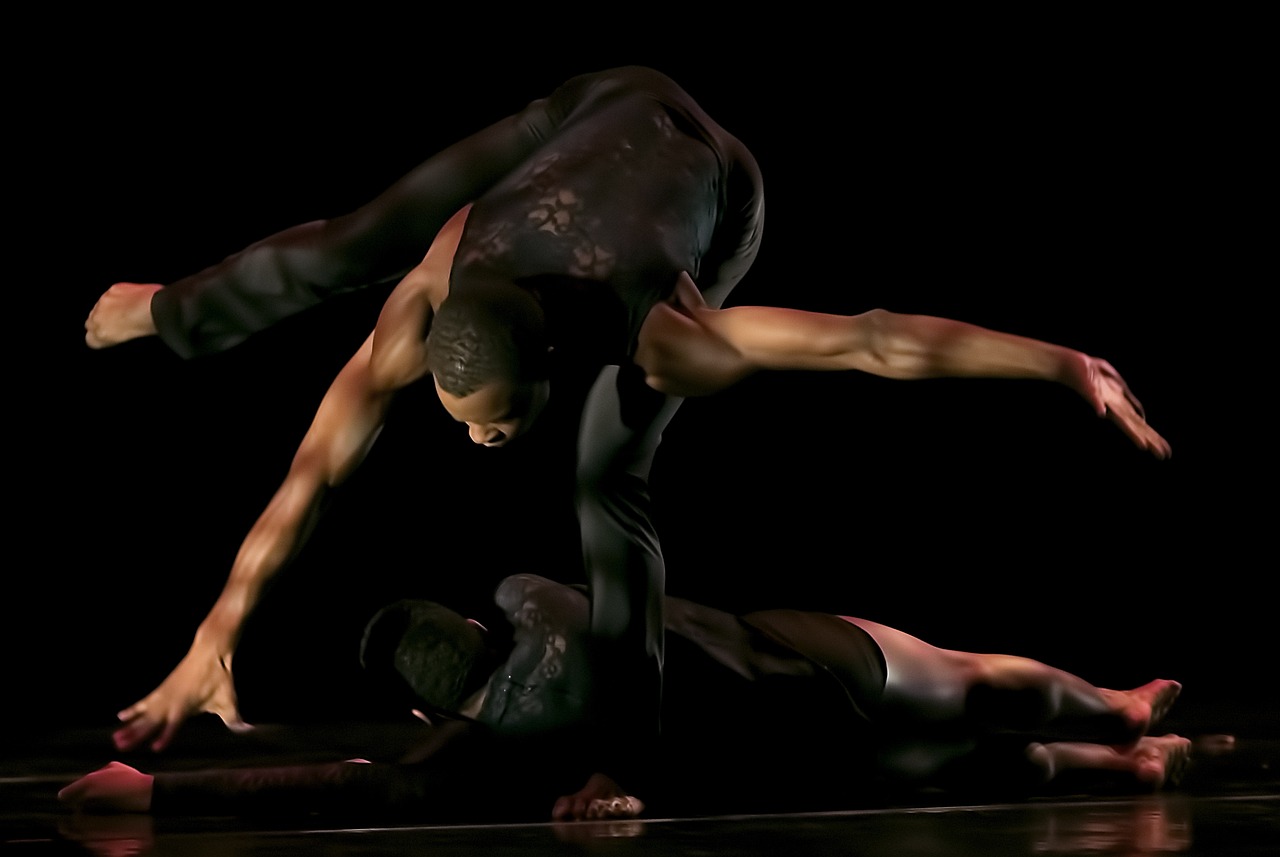
Music and Dance
Music and dance were integral parts of Aztec society, weaving together rhythms, movements, and symbolism to create vibrant cultural expressions. The Aztecs believed that music and dance were not only forms of entertainment but also powerful tools for communication with the divine and for strengthening social bonds.
Aztec music encompassed a wide range of instruments, including drums, rattles, flutes, and trumpets made from materials such as clay, wood, and seashells. These instruments were used in various ceremonial contexts, from religious rituals to military marches, adding a rhythmic dimension to important events in Aztec life.
The dances of the Aztecs were highly structured and symbolic, often incorporating intricate footwork, gestures, and costumes to convey narratives and emotions. Dance performances were held in honor of the gods, to commemorate victories in battle, and to celebrate harvests and other significant occasions.
One of the most renowned Aztec dances was the "Dance of the Voladores," where performers dressed as birds would climb a tall pole and then descend slowly, spinning around the pole while attached to ropes. This ritualistic dance symbolized the connection between the earth and the heavens, as well as the cycle of life and the changing of the seasons.
Music and dance were not only forms of artistic expression for the Aztecs but also served as important social functions, bringing communities together and reinforcing cultural identity. Through rhythmic beats and graceful movements, the Aztecs passed down their traditions, stories, and values from one generation to the next, creating a rich tapestry of artistic heritage that continues to inspire and captivate audiences today.
Frequently Asked Questions
- What types of art forms did the Aztec civilization excel in?
The Aztec civilization excelled in various art forms, including sculptures, mural paintings, ceramic art, featherwork, architecture, textile arts, goldsmithing, jewelry, music, and dance.
- Why is Aztec featherwork considered a highly esteemed art form?
Aztec featherwork is considered highly esteemed due to the intricate textiles, headdresses, and ornaments created using vibrant bird feathers. These pieces were worn during important ceremonies and symbolized prestige and power among the Aztec nobles and warriors.
- What role did music and dance play in Aztec society?
Music and dance played a significant role in Aztec society, with performances held during religious ceremonies, festivals, and celebrations. These artistic expressions honored the gods, commemorated important events, and united the community in cultural expression through rhythmic drumming, choreography, and symbolic gestures.




